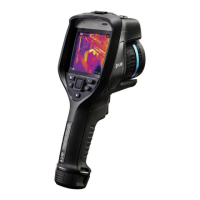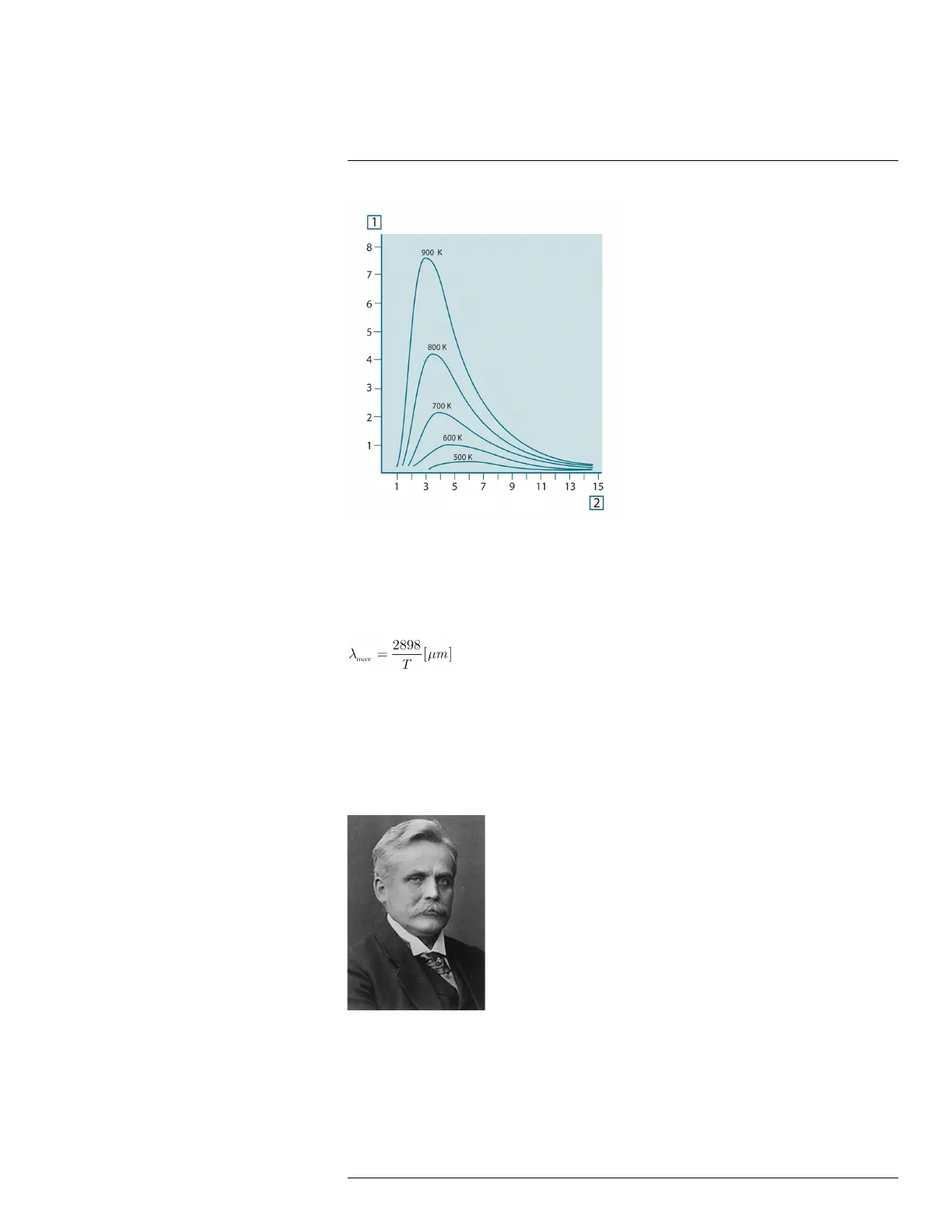Theory of thermography
35
Figure 35.4 Blackbody spectral radiant emittance according to Planck’s law, plotted for various absolute
temperatures. 1: Spectral radiant emittance (W/cm
2
× 10
3
(μm)); 2: Wavelength (μm)
35.3.2 Wien’s displacement law
By differentiating Planck’s formula with respect to λ, and finding the maximum, we have:
This is Wien’s formula (after Wilhelm Wien, 1864–1928), which expresses mathematically
the common observation that colors vary from red to orange or yellow as the temperature
of a thermal radiator increases. The wavelength of the color is the same as the wavelength
calculated for λ
max
. A good approximation of the value of λ
max
for a given blackbody tem-
perature is obtained by applying the rule-of-thumb 3 000/T μm. Thus, a very hot star such
as Sirius (11 000 K), emitting bluish-white light, radiates with the peak of spectral radiant
emittance occurring within the invisible ultraviolet spectrum, at wavelength 0.27 μm.
Figure 35.5 Wilhelm Wien (1864–1928)
The sun (approx. 6 000 K) emits yellow light, peaking at about 0.5 μm in the middle of the
visible light spectrum.
#T810190; r. AI/41890/41890; en-US
242

